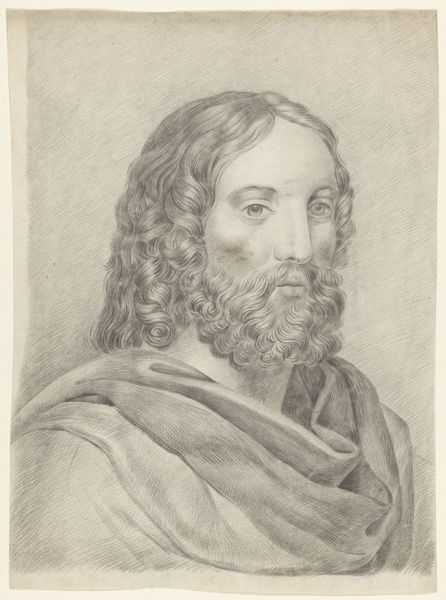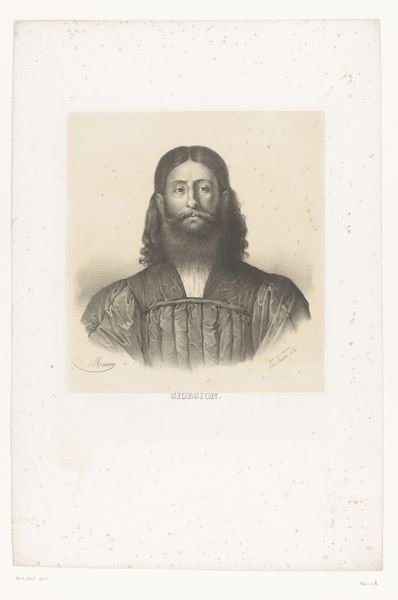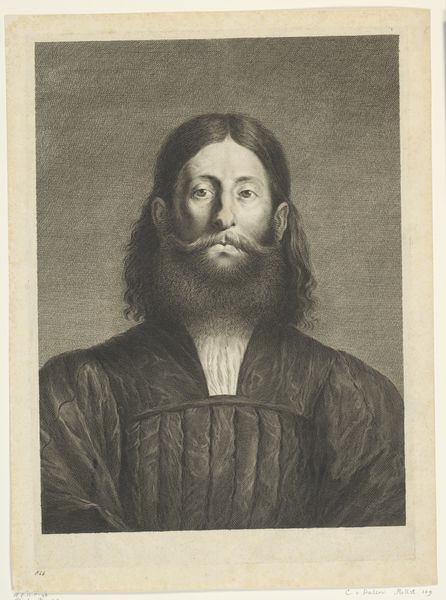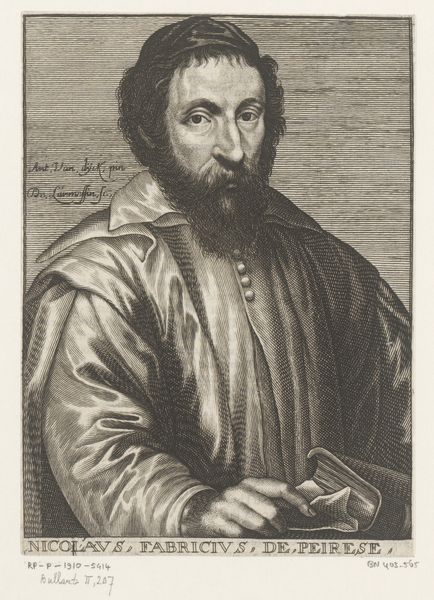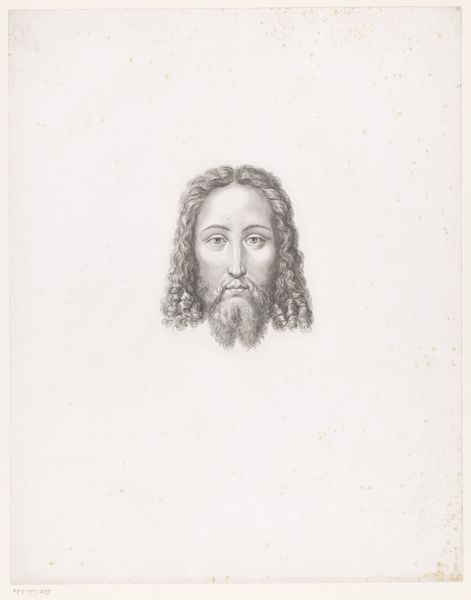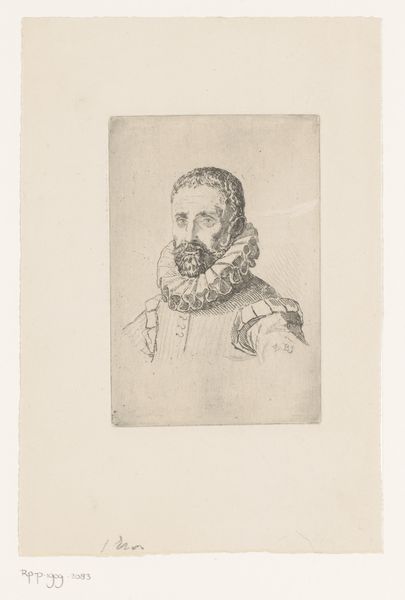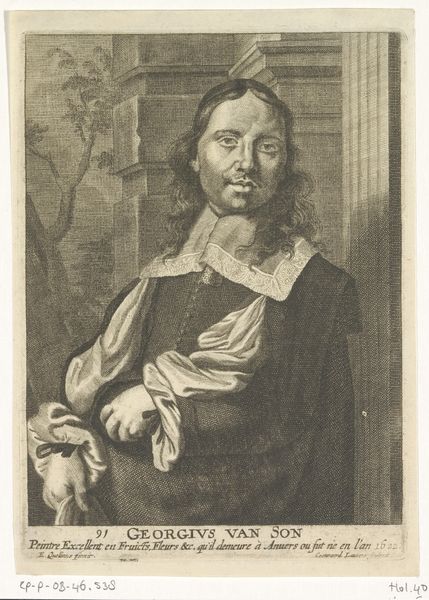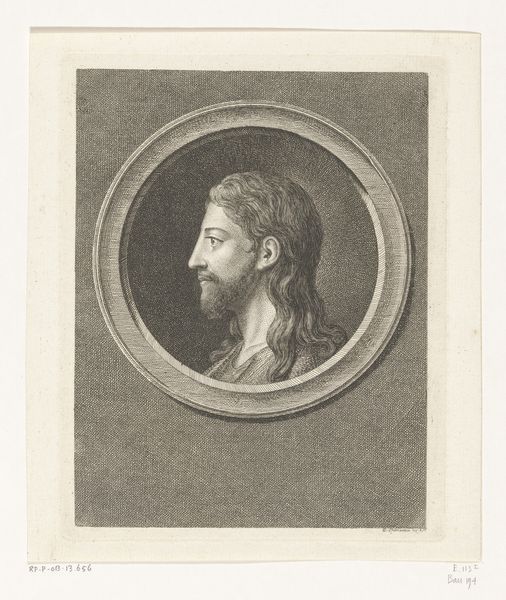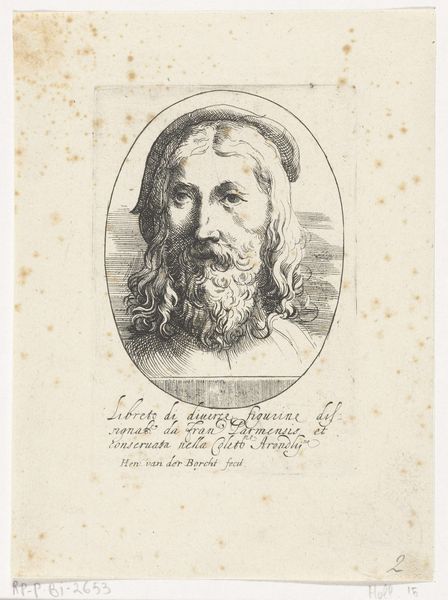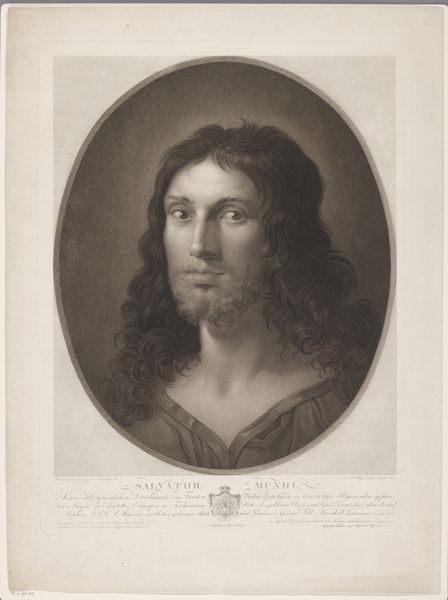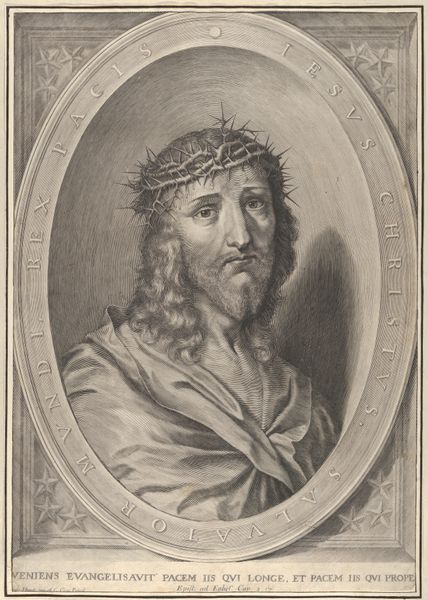
print, engraving
#
portrait
# print
#
old engraving style
#
figuration
#
line
#
portrait drawing
#
history-painting
#
engraving
Dimensions: height 192 mm, width 248 mm
Copyright: Rijks Museum: Open Domain
Curator: Here we have Pieter Bartholomeusz. Barbiers' engraving, "Christus zegent het brood", likely created between 1809 and 1837. It resides here at the Rijksmuseum. Editor: It's immediately striking – a soft, almost ethereal quality to the lines. There's a pensiveness in Christ's eyes, an upward gaze… it feels almost devotional. Curator: Barbiers' skill in this line engraving is notable. Consider the tools required to achieve such fine detail, the labor-intensive process of etching each line onto the plate. Prints like these were crucial in disseminating religious imagery during that period, essentially making it accessible to a wider audience beyond the elite. Editor: Exactly! This wasn't just an aesthetic exercise; it was about control and access. The church or wealthy patrons no longer completely dictated who got to see what religious art. Reproductions like this began circulating, changing the dynamic of viewership. Curator: Indeed, the politics of imagery are at play. The act of reproducing and distributing images carries social weight, challenging established hierarchies and norms. Moreover, who was buying them, and how were they consuming these images? The very materiality speaks volumes. The cheap production opened consumption possibilities. Editor: Right, how many middle-class households used prints such as these? Think about the rising bourgeoisie, newly eager to display their piety and moral seriousness. Did this drive artistic production towards more explicitly "moral" themes that these households were looking for? Curator: It begs questions about the market shaping the artist's choices too, doesn't it? Barbiers had to make a living; understanding who purchased these engravings reveals a dialogue between artistic intent and market demand. Editor: The availability and mass production made possible through engravings, disrupted traditional patronage and fueled a market for religious art among broader audiences, further illustrating the complex relationship between art, power, and social change. I think understanding art as part of a political power play is essential here. Curator: I think this is very accurate. Focusing on process, materials, and the surrounding society can deepen your experience with artwork so you will notice the details more vividly. Editor: And framing a picture inside the right history adds layers and invites further consideration and discovery.
Comments
No comments
Be the first to comment and join the conversation on the ultimate creative platform.
